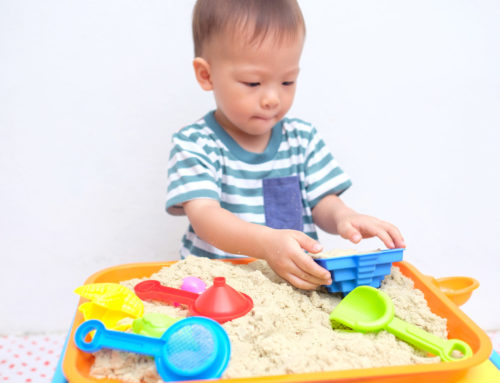By: Rebecca Michelsen, M.Ed., MCHES, Manager of Community Outreach & Family Programs
The holidays are upon us and so is the lure of new toys and gadgets. While it’s fun to buy your little ones a few new surprises, it’s important to remember that even with toys, safety comes first. According to the Consumer Product Safety Commission, the ER estimated 251,700 toy-related injuries in 2017.
What steps can you take to make sure your child’s toys are safe?
Check toys for lead.
Surprisingly enough, toys still sold today have been found to contain unsafe levels of lead and other harmful substances. Last year, the U.S. Public Interest Research Group Education Fund found that certain fidget spinners from a big box retailer contained “dangerously high levels of lead…” Make sure to check material labels and keep an eye out for warnings on tags.
Purchase age-appropriate toys.
Most manufacturers label toys with the intended age group of who the toy was created for. Companies are also encouraged to label toys as “choking hazards” for children under 3 years. Choking hazards include small toys or larger toys with parts that could easily detach or break. It’s also important to note that while a toy might be appropriate for an older child, if they have younger siblings, it could still pose a risk. Don Huber, Director of Product Safety for Consumer Reports advises parents to monitor playtime when smaller children are in the house. A small part can easily become lost during play and found by a curious toddler. If you’re wondering if the toy or part is too small, ask yourself this: can it fit through a toilet paper tube? If so, a child can choke on it.
Beware of magnetic toys.
According to federal toy safety guidelines, a magnet with a “flux index” or the “…measure of the force of attraction between the magnets” of more than 50 kG² mm² and is small enough to be swallowed is hazardous. In fact, if a child swallows two or more of these magnets, they can pose a serious health risk because they can come together inside the child’s intestine. Also, beware of toys with batteries, especially small button batteries as these can easily be swallowed and are poisonous.
Play it safe with toy cars and scooters.
While riding toys are often the most fun, they can also be very dangerous and account for almost half of toy-related deaths. Make sure to closely supervise children while playing with ride-on toys and also ensure they have the correct safety equipment. Helmets and knee pads can allow your child to stay safe while having fun!
In addition to these safety tips, it’s important to always be aware of toy recalls. Defects can happen to even the most solidly-built toy.
What measures have you taken to ensure your child’s toys are safe?
References:
https://www.cpsc.gov/s3fs-public/Toy_Report_2018.pdf?qIO1DVoYhV6lzYgcLa04K28yF28BOgdS
https://www.consumerreports.org/child-safety/toy-safety-tips-holiday-gift-buying/







